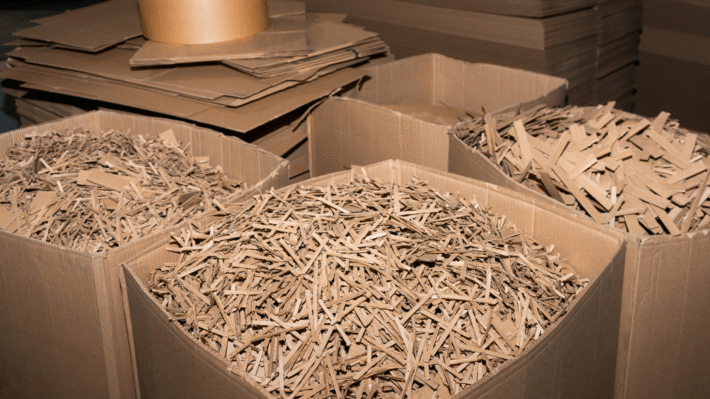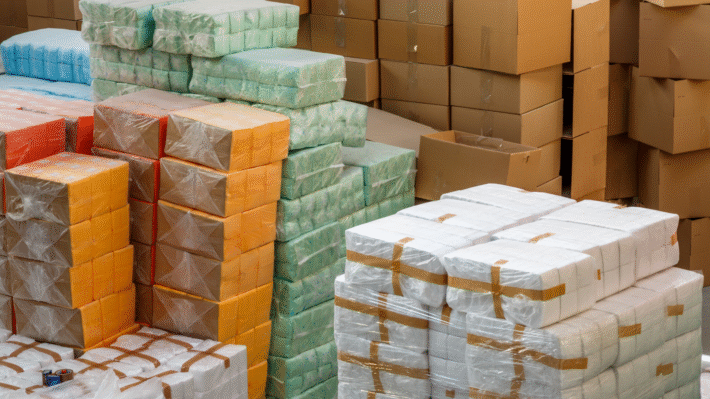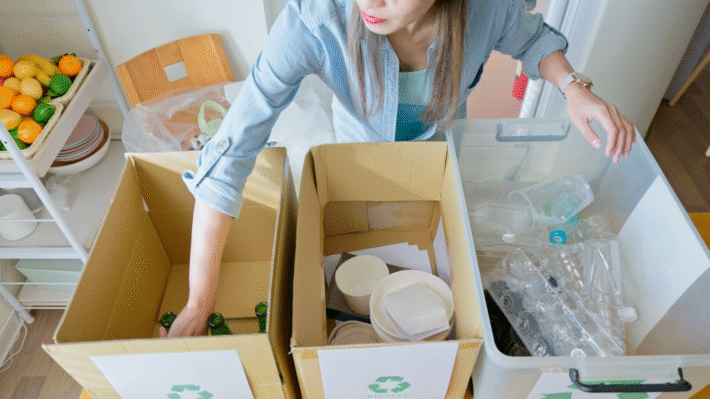Inherently Safer Chemistry for Accident Prevention with Smart Strategies

Inherently Safer Chemistry is like having a magic wand for safer chemistry adventures! Imagine a world where chemical accidents are reduced simply by making smarter choices. By selecting safer substances and creating safer reaction conditions, we can make big changes.
Instead of reacting after accidents happen, we opt for proactive safety management. This means taking action before things go wrong. Safety is not just about following rules but about thinking ahead and choosing wisely.
Learning about inherently safer practices can spark a passion for safety, helping the world become a greener and safer place. Curious minds will find plenty of ways to get involved. It’s a journey worth taking, and who knows—you might even discover the chemistry wizard within you!
Learn more about inherently safer chemistry
Inherently Safer Chemistry: The Basics
Inherently safer chemistry is all about making chemistry less risky. It means picking safer things and safer ways to mix them. It’s like a recipe for keeping people and the environment safe. Let’s dive into this smart chemistry approach!
What is Inherently Safer Chemistry?
Inherently safer chemistry is a method to do chemistry in a safer way by using better materials and methods. It’s like finding the safest path across a busy street. Why take risks when there are safer options available?
Understanding Safe Chemistry
Understanding safe chemistry is like knowing which toys are safe to play with. It involves choosing chemicals that are not dangerous. When we do this, the chance of an accident goes down. Safe chemistry is choosing chemicals and ways that are friendly and less likely to cause problems.
Safe chemistry also makes things easier. With fewer risks, we have less to worry about. Here is a helpful place to learn more about safe chemistry ideas.
The Origin of Safer Chemical Practices
The origin of safer chemical practices goes back to when people realized that some chemicals are just too risky. Chemists asked themselves, “How can we make this better?” They started looking for new methods. These practices were born from wanting to make workspaces and the world a safer place.
Back in the day, people used any chemical they liked. But today, we have rules and smart chemists who pick better chemicals. This new age thinking makes every lab a much safer spot.
Why Choose Safer Chemistry?
Choosing safer chemistry is like choosing a helmet when you ride a bike. Why risk an accident if you can protect yourself from the start? Let’s see why this choice matters.
Benefits of Safer Substances
The benefits of safer substances are huge! Safe substances mean fewer accidents at work and in our communities. They also mean saving money because there are fewer damages and payouts due to accidents.
Using safer substances is also good because it helps keep the environment safe. Safer chemicals help us protect our towns, rivers, and oceans. The result? A healthier planet for all of us. Discover more about these benefits here.
Impact on the Environment
The impact on the environment from safer chemistry is like planting trees; it cleans the air and makes the world better. Safer substances produce less pollution, which keeps our water and air clean. Protecting the environment is really about making sure everything stays in balance.
When we use chemicals that are less harmful, we help save animals and plants too! That means safer chemistry is not just good for us, but for every living thing around us. Check out how safer chemistry helps the Earth here.
By understanding these basics, you take a big step in supporting a safer, healthier world!
Techniques for Safer Chemistry
Understanding techniques for safer chemistry is like learning to bake without burning the cake. It’s about using the right ingredients and the right steps to keep everything smooth and safe.
Selecting Safe Substances
Selecting safe substances is the first big step. It’s like choosing fresh fruits instead of candies for a healthy snack. You want chemicals that won’t explode or catch fire easily.
Identifying Safe Chemicals
Identifying safe chemicals is like picking the right tool for a job. We look for chemicals that are less toxic and not harmful to us or our planet. Substances like water and vinegar often replace more dangerous chemicals. But how do we find these chemicals? Well, scientists check what they are made of and see how they react. This helps us know if they are safe or not.
Examples of Safer Substances
Let’s look at some examples of safer substances! Imagine if instead of using strong bleach, we use hydrogen peroxide. It’s much gentler but works well for cleaning. Or, consider using citric acid instead of harsh acids. Citric acid comes from fruits like lemons and is used safely in many products we use every day.
Optimizing Reaction Conditions
Optimizing reaction conditions means making sure everything happens just right. Think of a fun science experiment in school. We want it to work well but also be safe.
Adjusting Temperature and Pressure
Adjusting temperature and pressure is key. If things get too hot, they might blow up. If they are too cold, nothing happens. So, we keep the temperature and pressure just right. Picture a popcorn machine. Too hot, and popcorn might burn. Too cold, and nothing pops! Same with chemicals.
Limiting Hazardous Outputs
Finally, limiting hazardous outputs is like making sure a messy art project stays on the paper and not on the floor. We use tools like filters and lids to catch any bad stuff and make sure it doesn’t go into the air or water.[^1]
With these simple steps, we can make chemistry safer and more effective! Learn more about safer chemical alternatives.
[^1]: For more details on preventing dangerous chemical outputs, check out this comprehensive guide on Environmental Protection Agency.
Proactive Safety Management in Chemistry
Proactive Safety Management in Chemistry is like a superhero team. It helps us avoid accidents before they happen. Let’s dive into how this works and why it’s super important!
Key Safety Measures
Key Safety Measures in Chemistry are things we can do to keep everyone safe. We use these measures to handle chemicals smartly and safely.
Risk Assessment Techniques
Risk Assessment Techniques are like a detective’s tools. They help us find dangers before they become big problems. Think of it as checking if the path is safe before you step on it.
- Identify Hazards: Look for things that could be dangerous. This could be a hot object or a sharp tool.
- Evaluate Risks: Check how risky these things are. Is it a small risk or a big one?
- Control Measures: Plan ways to stop the danger. Maybe wear gloves or use a special tool.
By using these techniques, we can prevent accidents and make the lab a safer place.
Implementing Safety Protocols
Implementing Safety Protocols is like following the rules of a game. These rules help keep everybody safe.
- Safety Gear: Always wear the right gear like goggles and gloves. They’re your armor!
- Emergency Plans: Know what to do if something goes wrong. Have a fire drill or a first aid kit ready.
- Regular Checks: Look around the lab to make sure things are in order. A tidy lab is a safe lab!
These protocols make sure we do things the right way, keeping accidents at bay.
Continual Safety Improvement
Continual Safety Improvement is about getting better all the time. We learn from our experiences and make safety even stronger.
Monitoring and Feedback Loops
Monitoring and Feedback Loops keep us on our toes. We check if things are working well and make changes if needed.
- Watch and Learn: Keep an eye on how things are done. Is there a better way?
- Feedback: Ask people what they think about safety. They might have great ideas!
- Improve: Use this information to make safety even better.
This way, we keep improving and stay one step ahead of any problem.
Training and Development
Training and Development is like going back to school, but for safety. We learn more so we can do better.
- Safety Classes: Attend workshops to learn about new safety techniques.
- Skill-building: Get better at using safety tools and equipment.
- Update Knowledge: Stay informed about the latest in safe chemistry practices.
Through training and development, we become safety experts, ready for anything that comes our way.
For more on proactive safety, check Proactive Safety Management in Chemistry and keep your lab accident-free!
The Future of Inherently Safer Chemistry
The future of chemistry is not just about discovering new substances, but also about making the entire process safer. Making chemistry safer involves using Innovative Practices that reduce the chance of accidents. These practices include the use of new technologies and adapting to new challenges. Let’s talk more about these practices.
Innovative Practices
Innovative practices in chemistry are all about being creative and smart. Today, technology helps make chemistry safer. We can now handle chemicals safely and smartly with modern tools.
Emerging Technologies in Safety
Emerging technologies in safety are exciting because they help us control and monitor chemical reactions. New gadgets help us keep track of how chemicals react and ensure they don’t behave in unexpected ways. One such tool is the CESI-MS (Capillary Electrophoresis-Surface-Enhanced Raman Spectroscopy), which helps study tiny particles safely.
With these tools, scientists can predict what might happen and stop accidents from happening. This saves time, money, and lives. Learn more about these tools here.
Adapting to New Challenges
Adapting to new challenges is also important for safer chemistry. Every day, new problems show up in the world. For example, with more chemicals being made for different uses, it’s important to know how each behaves. Scientists must work together to find solutions for these new challenges.
By using computer simulations, researchers can see what might happen in a reaction without actually performing it in the lab. This helps in finding weaknesses before they become big problems. Read more about simulations in chemistry here.
Global Impact of Safer Chemistry
Safer chemistry has a big effect on the world. It changes how countries create and enforce rules about chemicals. It also encourages scientists from different places to work together.
Influences on International Policies
Influences on international policies mean that when one country discovers something safer, others learn from it. Countries make better rules to protect people and the planet. For instance, the United Nations has guidelines that countries use to handle chemicals safely. These guidelines help ensure that everyone follows the same rules to keep their people safe. Check out these guidelines here.
Collaborative Global Efforts
Collaborative global efforts happen when scientists from different countries work together. This teamwork helps them share ideas and find better solutions faster. For instance, the Global Green Chemistry Initiative encourages countries to use greener, safer chemical methods in industry and research.
This sharing of knowledge means that if one country finds a better practice, others can learn from it too, making the world a safer place. Learn more about green chemistry here.
These practices and impacts help ensure a safer future in chemistry, making it less risky for everyone. By working together and using new tools, we can prevent accidents and keep our world safe.



